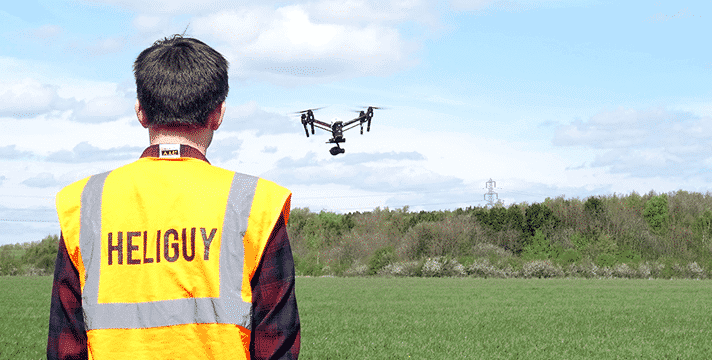
To operate a Small Unmanned Aircraft System (SUAS) commercially within the UK, operators require a Permission for Commercial Operations (PfCO) from the Civil Aviation Authority (CAA). In order to obtain a PfCO operators must be competent UAS pilots and have in place an Operations Manual which has been ratified by or on behalf of the CAA. Heliguy, one of the many NQE’s we are associated with, offer a tailored course to develop a pilot’s knowledge of regulation for commercial flights and help to provide the necessary tools for safe operation in a variety of environments.
Last week, Coverdrone was invited to visit Heliguy’s Drone Training Group School, in Macclesfield, which took place over a three-day period to gain an insight into what our clients go through in order to obtain their PfCO and also to expand our knowledge of the industry. The Ground School encapsulates the CAA syllabus by delivering engaging and practical lessons which are integrated with tasks and exercises that allow the instructors to assess the progress of the students and compliments the theoretical knowledge which students attain.
Airlaw, Mapping & Airspace
During the first day of the course, students firstly go through a meet and greet with fellow candidates and the trainers outline the process that the students will go through in order to achieve their PfCO. The first lesson of the day is Airlaw in which students learn all the relevant rules and regulations (keep your eyes peeled for a blog post on this!). In the afternoon, students then move onto mapping and airspace and get the chance to get hands on with Ordnance Surveys and Aviation Charts.
Flight Principles & Meteorlogy
The second day began with a recap of day one to ensure that outstanding questions are answered, and the information has begun to sink in. We then moved onto the subject of Aircraft which covered areas such as aircraft types and principles of flight. The latest DJI aircraft was used to demonstrate the various component parts which make up an aircraft. Human Factors and Airman Principles is then covered during the afternoon. 75% of accidents and incidents are cased by ‘less than optimum’ pilot performance so it is imperative that students are aware of the mechanisms that cause failure to perform to a satisfactory standard. Students are then taught the effects that meteorology/weather has on a flight and the safest operating conditions.
Risk Management & The Theory Exam
On the final day of the course, students are provided with a comprehensive overview of how all of this theoretical knowledge is applied to a real-world operation. As one of the most important factors of any operation, Risk Management is then discussed in the morning, where students learn how to effectively conduct a risk assessment and implement control measures. For the duration of the afternoon, students are then split into groups to work together to plan an operation and apply the knowledge obtained during the course. The day is then concluded with the ‘dreaded’ theoretical exam.
Over the three days, students are provided with continuous support in order to produce their Operations Manual as well as being provided with a template to ensure that the correct information is included within the document. The instructors review students’ operations manuals to ensure that it is to the standard required by the CAA.
Our Training Experience Summarised
Overall, Coverdrone had a fantastic experience with the Heliguy team and learnt a huge deal of information which was reflected in the team passing their theory examination! The mixture of practical and theoretical lectures makes the learning experience fun and easy to understand.
This course is essential for anybody that is genuinely intent on flying a drone commercially! For further information on the Drone Training course, please visit the Heliguy website.
Remember, we offer free flight training for clients going through any flight examination with any NQE within the UK!
